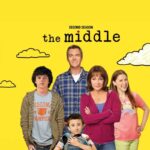Puerto Rico-born Juan Luis Guerra Seijas (June 8, 1957) is a Dominican musician and singer-songwriter who has also produced records. More than 30 million recordings have been bought and sold, making him one of the most successful Latin performers of all time.
To date, he’s been recognised with 21 Latin Grammy Awards as well as two Grammys and two South American Billboard Music Awards. Three Latin Grammy Awards were given to Guerra in 2010; he took home Album of the Year honours. He was named Producer of the Year at the 2012 Latin Grammy Awards.
In the last several decades, Guerra has become one of the most well-known Latin performers in the world. Afro-Latin fusion and merengue are two of his most popular genres, and he’s had a lot of success with them. In addition to popularising bachata music across the world, he is commonly referred to as the “father of bachata,” despite the fact that his form of bachata incorporates bolero rhythms and aesthetics, as well as bossa nova-influenced melodies and harmonies.
Instead of sticking to one genre, he uses a wide range of rhythms, such as merengue, bachata-fusion, balada and salsa, along with rock & roll and even gospel. Undoubtedly, one of his most lauded works is “Ojala que Café Llueva.” (Praying for Coffee Rain).
Juan Luis Guerra Career-
He attended the Universidad Autónoma de Santo Domingo, where he studied philosophy and literature. At El Conservatorio Nacional de Msica de Santo Domingo, he first studied guitar and music theory. He subsequently transferred to Berklee College of Music in Boston, where he earned a certificate in jazz composition by 1982.
His debut album, Soplando (1984), was recorded with Dominican musicians who became known as Juan Luis Guerra y 440 after he returned to the Dominican Republic.
A440 is the standard tuning, thus the number relates to it. Cuatro Cuarenta is the band’s Spanish name (“Four Forty”). Guerra claims that his debut album “wasn’t intended to be a mainstream smash” because it was based on jazz compositions and themes he learnt at Berklee. However, he began to write more merengues in the following years.
¡Feliz Navidad! pic.twitter.com/wkxmNcAIzk
— Juan Luis Guerra (@JuanLuisGuerra) December 25, 2021
Juan Luis Guerra 1980s-
Juan Luis Guerra was recruited to Karen Records in 1983 after performing for Dominican businessman Bienvenido Rodrguez. Toward merengue, Guerra’s musical approach took a dramatic turn. Mudanza y Acarreo, released in 1985, and Mientras Más Lo Pienso…T, released in 1987, were the two albums he released during this time period.
The band was nominated to attend the OTI (Organization of Iberoamerican Television) Festival to represent the Dominican Republic because of their works.
When 440 recorded Ojalá Que Llueva Café in 1988, Guerra became the band’s most prominent vocalist. The sales of this album topped the charts in numerous Latin American nations, establishing him as a worldwide star.
Juan Luis Guerra 1990s-
Bachata Rosa, the group’s second album, was released in 1990 and went on to become a huge smash, earning Guerra his first Grammy. Guerra was able to continue touring Latin America, the United States, and Europe because to the album’s five-million-plus sales.
The album has classic love songs such as “Burbujas de amor,” “Bachata Rosa,” “Rosala,” “Como abeja al panal,” “A pedir su mano,” “Carta de amor,” and “Estrellitas y duendes,” among others (Little stars and elves).
In 1992, Guerra sparked controversy when he released his second album, Areto (which means “song and dance” in Taino). Among its most popular songs was “El costo de la vida,” a song with a strong anti-capitalist message. Many of the tracks on this album are anti-imperialist protests against things like poverty in Latin American countries, the “discovery” of the Americas (“1492”), and the hypocrisy of first-world governments. “El costo de la vida” was his first Hot Latin Tracks number one.
Fogaraté (1994), his next album, was mostly unnoticed. Perico Ripiao and other less-known Dominican music genres are included.
For Best Merengue Performance, Best Tropical Song, and Best Engineered Album, Guerra won three Latin Grammys in 2000 for his 1998 CD Ni es lo mismo ni es igual (Neither The Same Nor Equal). “Mi PC,” “Palomita Blanca,” and “El Niágara en Bicicleta” are among the band’s most popular songs. “Mi PC,” “Palomita Blanca,” and “El Niágara” (The Niagara on Bicycle).
Poesía! Como todo lo que hace @AlejandroSanz 

 https://t.co/ReRdjIvyV1
https://t.co/ReRdjIvyV1
— Juan Luis Guerra (@JuanLuisGuerra) October 6, 2021
Juan Luis Guerra 2010s-
The official video for Guerra’s new single, “Bachata en Fukuoka,” was published on April 5th. Simon Brand, a well-known Colombian director, directed the video, which was shot on location in Los Angeles. In 2010, Guerra published A Son de Guerra, which combines eight musical rhythms (bachata, bolero, merengue, bolero/Mambo/Rock/Jazz/Reggae) and features the involvement of Juanes among others.
Hits like “La Guagua,” “La Calle,” and “Bachata en Fukuoka” can be found on the CD. “Bachata en Fukuoka,” the first song from his new album, debuted at the top of the Billboard Hot Latin Tracks, Tropical Songs, and Latin Pop Airplay charts. Enrique Iglesias and Guerra’s “Cuando me Enamoro” was at the top of the Rhythm Airplay Chart at the same time.
Video for the song ‘In the Sky There Is No Hospital’ debuted on YouTube in January of this year. Music from “Colección Cristiana” was used for this song, an album with Christian themes. This collaboration with Spanish artist Miguel Bosé, “Yo Creo En Ti,” was released later that year on Miguel’s Papitwo album.
The single “Tus Besos” was published on April 25th, 2014 and has since been receiving airplay worldwide. Inspired by the rock and roll of the 1950s, this song has an accompanying music video. Jean Gabriel, his son, directed this video.
Juan Luis Guerra beat Celia Cruz’s 1987 record of more than 400,000 people attending a concert in an open-air plaza in Santa Cruz de Tenerife, Spain, during the Carnival of Santa Cruz de Tenerife in 2019.

Read More-All American Season 4 Release Date of Episode 8, Why The Show Is Delaying? Know Here.
Juan Luis Guerra Songs of Different Language-
Like “July 19th” from his 1994 album Fogaraté, and more recently “Medicine for My Soul” with Italian vocalist Chiara Civello, Guerra has recorded numerous songs in English. In addition to “Woman del Callao,” “Guavaberry,” and “Seorita,” which appeared on Grandes Exitos, a compilation CD released in 1995, other of his songs contain lines in both Spanish and English.
Both the title track “Areto” and the song “Naboria daca, mayanimacaná” are performed in Arawak by the extinct Taino people of Hispaniola. The album “Bachata Rosa” by Juan Luis Guerra was also released in Portuguese. A Latin Grammy winner for Best Tropical Song, he incorporates Japanese slang into his song Bachata en Fukuoka.
Composer of Music for other musicians
For Taty Salas, he created the music for De tu boca, a song with which he competed in the now-defunct OTI Festival, earning the top three in the category.
In 1988, he made his debut as a songwriter for other musicians. He also wrote songs for Mexican performers such as Emmanuel (1990’s No he podido verte) and Luis Miguel (1993’s Hasta que me olvides and 2003’s Te necesito), for whom he served as a composer. This composer was also involved in the Puerto Rican salsa artist Gilberto Santa Rosa’s 1994 album (Te Propongo).



